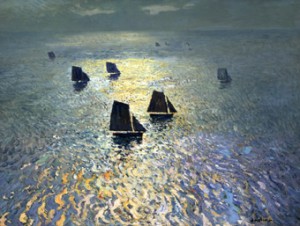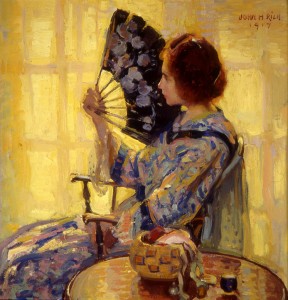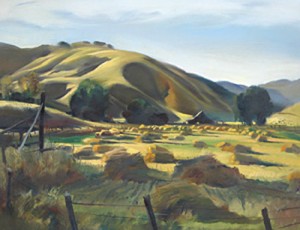Light
It is a wonderfully sunny day, with the strong yellow summer light glowing in the leaves and bounding off the pale straw hats of the Saturday city walkers. I am still externally constrained form spending all my time looking through a camera lens, so I wandered into the Portland Art Museum to renew my acquaintance with this lovely museum. (I had described it as ‘little’ but that is only in relation to the behemoths of other major cities; it’s a medium-sized museum in a medium-sized city.)
The light spilling around the buildings of Portland spilled out of some of the canvases on display. It got me to thinking about the difference in the light here and, for example, in the Netherlands, where stark white highlights are indeed the norm, just as one still sees in all the still lives and cityscapes by Golden Age painters.
The strong beams of the golden light of the outdoors comes indoors too : you can see that it is bright, cosily golden, and summery outdoors even in John Hubbard Rich’s portrait of a woman.
Or a wonderful landscape of roads, train lines, and shadows by Emil Kosa Jr. – I couldn’t find a photo of that painting on the internet so here is one which is somewhat similar.
All of these wonderful flows of golden warmth spilling across landscapes and into lives are an accurate depiction of the visual experience of living in this part of the world. So, is it fair to say we need artists from all parts of the world to depict their natural experience?
But, and I have to add this, light is crucial to visual impact, and warmth is essential to my bones in the summer, but it is water which makes us able to grow our food and fibre and wood and even ducks. Water is the essential for our survival, and light is the glow across the surface for our eyes, minds, and souls.


